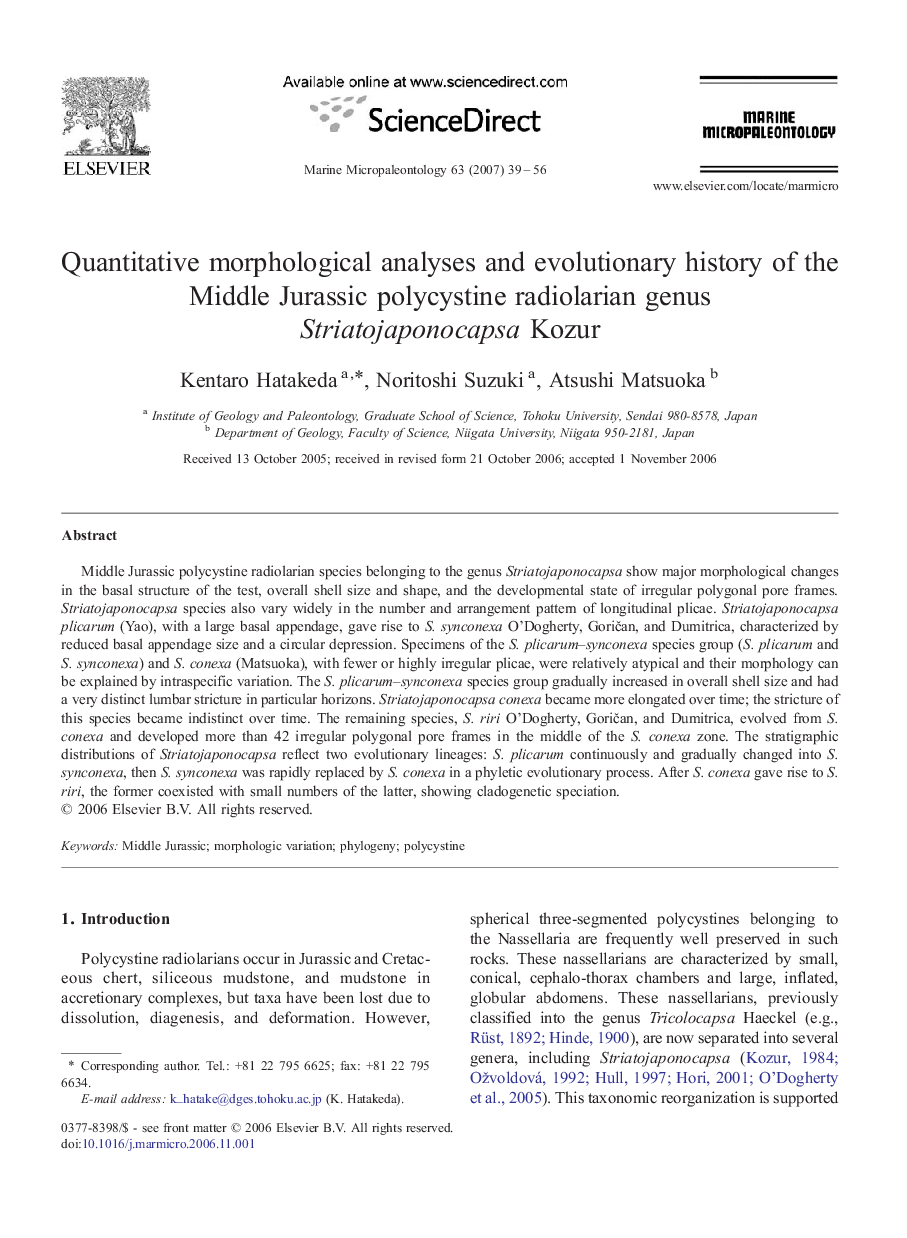| Article ID | Journal | Published Year | Pages | File Type |
|---|---|---|---|---|
| 4749486 | Marine Micropaleontology | 2007 | 18 Pages |
Middle Jurassic polycystine radiolarian species belonging to the genus Striatojaponocapsa show major morphological changes in the basal structure of the test, overall shell size and shape, and the developmental state of irregular polygonal pore frames. Striatojaponocapsa species also vary widely in the number and arrangement pattern of longitudinal plicae. Striatojaponocapsa plicarum (Yao), with a large basal appendage, gave rise to S. synconexa O'Dogherty, Goričan, and Dumitrica, characterized by reduced basal appendage size and a circular depression. Specimens of the S. plicarum–synconexa species group (S. plicarum and S. synconexa) and S. conexa (Matsuoka), with fewer or highly irregular plicae, were relatively atypical and their morphology can be explained by intraspecific variation. The S. plicarum–synconexa species group gradually increased in overall shell size and had a very distinct lumbar stricture in particular horizons. Striatojaponocapsa conexa became more elongated over time; the stricture of this species became indistinct over time. The remaining species, S. riri O'Dogherty, Goričan, and Dumitrica, evolved from S. conexa and developed more than 42 irregular polygonal pore frames in the middle of the S. conexa zone. The stratigraphic distributions of Striatojaponocapsa reflect two evolutionary lineages: S. plicarum continuously and gradually changed into S. synconexa, then S. synconexa was rapidly replaced by S. conexa in a phyletic evolutionary process. After S. conexa gave rise to S. riri, the former coexisted with small numbers of the latter, showing cladogenetic speciation.
